Description
Butea is medium sized tree that grow in dry seasons and dry regions. This deciduous tree grows up to height of 15mts. This tree bears dark orange or scarlet colored flowers and is called flame of the forest. Bark of the tree is fibrous, crooked and tortuous and bluish grey or dark brown from outside. Bark of this tree show a reddish exudate. Leaves are trifoliate; petioles are long with small stipules. Leaflets are more or less leathery ovoid in shape with 7-8 pairs of lateral veins. Flowers are 2.5cm long, orange red or scarlet in color and produced in racemes about 15cm long. Fruits are indehiscent pods about 15-20cm long and 4-5cm broad. Fruits are externally covered with small brown colored hairs. Seeds are 3cm long, ellipsoid and flattened. Flowering season of this tree is from February to April and fruits appear from month of May to July. Gum obtained from this tree is called gum kino.
General Information
Butea is extensively used in Ayurveda for its various medicinal values. Flame of the forest, bastard teak, battle of plassey tree, parrot tree, Bengal kino and palas tree all are common names of butea monosperma. In hindi a common phrase is used “dhak ke teen paat”, it comes from three leaflets of butea. From the month of March to July this tree becomes flame of forest because it is totally covered with orange red flowers. Flowers were used to prepare holi colors in older days. In India it is state flower of Jharkhand. In india dried leaves of plasaah are used to make disposable leaf plates and leaf bowls to serve food. Charcoal is obtained from good quality of butea. Its wood pulp is very soft and used in newsprint.
Acharya charak and shushrut used flowers and bark of this tree to prepare various medicines. In Ayurveda it is used as anthelmintic and tonic. According to chakardutta its seeds are used as anti-parasitic and gum is astringent.
Leaves of butea are rich in glucoside, linoleic acid, oleic acid and lignoceric acid. Bark contains gallic acid, palasitrin, butrin, butolic acid, cyaniding, Lupenone and palasimide. Gum contains tannins, pyrocatechin and mucil isaginous materials. Flowers are rich in flavonoids, triterpene, butein, butin, isobutrin, coreopsin, isocoreopsin and sulphurein.
All parts of this plant contain various different biological activities like anti-microbial, anti-fertility, anti-helminthic, anti-diarrhea, anti-hypertensive, anti-diabetic, anti-inflammatory and hepato protective.
Habitat
Butea monosperma is mainly native to tropical and subtropical regions of Indian sub-continent. It is also distributed in Southeast Asia ranging from India, Bangladesh, Nepal, Sri Lanka, Myanmar, Thailand, Indonesia, Vietnam and Malaysia. In India it is easily found throughout drier parts, open grasslands and other wastelands.
Classification
- Kingdom – Plantae
- Order – Fabales
- Family – Fabaceae
Ayurvedic Properties
| Hindi / Sanskrit | English | ||
| Rasa | Tikta, Katu, Kashaya | Taste | Bitter, Pungent, Astringent |
| Guna | Laghu, Ruksha | Physical Property | Light, Dry |
| Virya | Ushna | Potency | Ushna |
| Vipaka | Katu | Metabolic Property (After Digestion) | Pungent |
Effects On Doshas
It balances kapha dosha.
| Charak Samhita | Sushrut Samhita |
| · Mushtadi gana,
· Rodhradi gana · Ambhastadi gana, · Nyogradhadi gana |
· Mushtadi gana,
· Rodhradi gana · Ambhastadi gana, · Nyogradhadi gana |
Practical Uses Of Butea Monosperma
- External application of butea bark is applied over wounds and ulcers for quick healing.
- Palaosin is a compound that is obtained from its seeds are anti-helminthic and laxative in nature and used to cure worm infestation.
- Plasaah bark and flowers are used to reduce pain in affected areas and inflammation and sprain in body.
- Gum of the tree is used to treat diarrhea and dysentery.
- Dried flowers of this tree are soaked overnight and saffron color water obtained is used for bathing during summers to protect children against various skin allergies and skin disorders.
- Flowers of this tree are used in the treatment of impotency and very beneficial for irregular bleeding and severe abdominal pain during menstruation. Decoction of leaves relieve leucorrhoea.
- Poultice prepared from leaves of butea relieves various skin disorders like boils, pimples, swelling and skin ulcers.
- Fruits and seeds are used in the treatment of piles and various eye related disorders.
- Acrid bark is this tree has multiple features and it is anthelmintic, appetizing, laxative and aphrodisiac. It is useful in piles, liver disorders, gonorrhea and bone fractures. Bark is also used as blood purifier. Paste of bark is used externally to relieve body swelling. Bark juice is very effective in goiter.
- Roots of this herb possess analgesic and anti-fertility properties. It is very beneficial for treating night blindness and other eye disorders.
- Flowers are blood purifier and used to reduce toxins from body. Flowers protect body from free radicals. Flower paste is applied locally to reduce swelling in arthritis, injury and sprains.
- It helps in pacification of vata and kapha dosha.
Part Used
- Flowers
- Leaves.
- Bark
- Stem
- Gum
Dosage
- Stem bark powder – 5-10gm
- Gum – 25-50mg
- Decoction of bark – 50-100ml
- Fresh leaf juice – 5-10ml
- Flower powder – 3-6gm
- Seed powder – 0.5-1gm


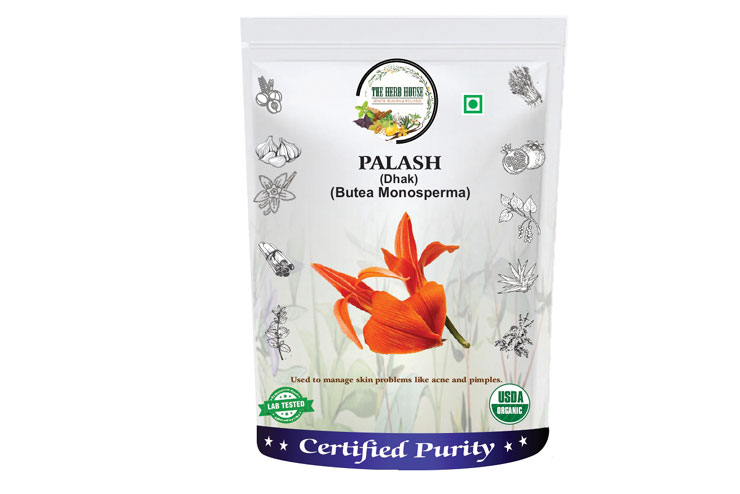
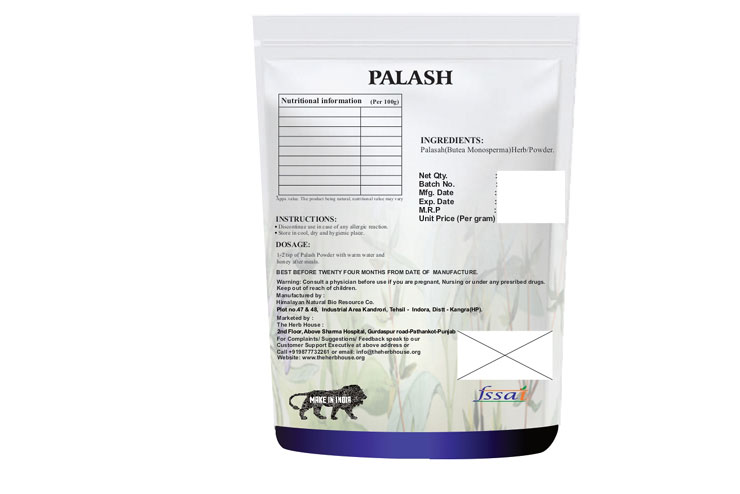
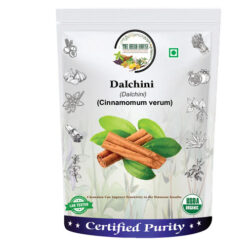
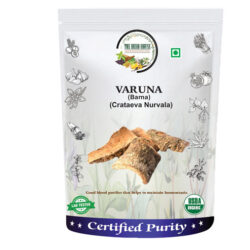
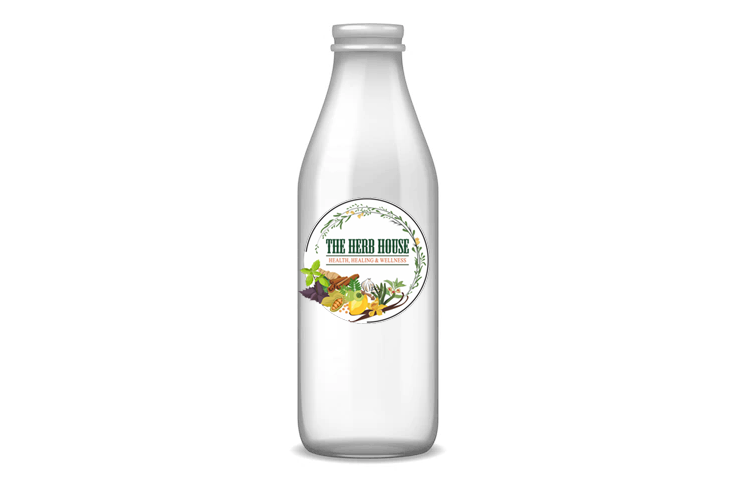
Reviews
There are no reviews yet.